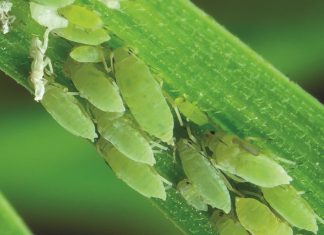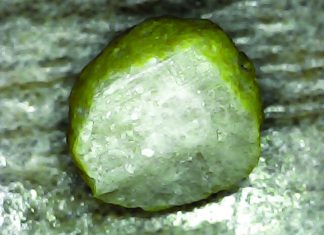
Plant Science and Plant Pathology, University of the Free State
 Dr Miekie Human,
Dr Miekie Human,research and policy
officer, Grain SA
Producers are urged to scout their fields for signs of Sclerotinia. The wet conditions experienced across the country could lead to disease development during this growing season.
Scout, scout, scout!
Take the time to investigate your fields for the presence of Sclerotinia by scouting for apothecia (Photo 1). If your cabbage, lettuce, soybean and/or sunflower fields have a history of diseases associated with Sclerotinia sclerotiorum, there is a greater likelihood of finding the survival structure known as sclerotia (Photo 2a and Photo 2b). When your crops reach the point of ‘canopy-closure’, inspect the soil surface for sclerotia and apothecia, as these provide an indication of the presence of primary inoculum (called ascospores) which may be expelled from the apothecia. However, do not be disheartened when you spot the bird’s nest fungus (Photo 3) as it is commonly misidentified as apothecia. Other common field mushrooms may also be observed under wet and cool conditions.
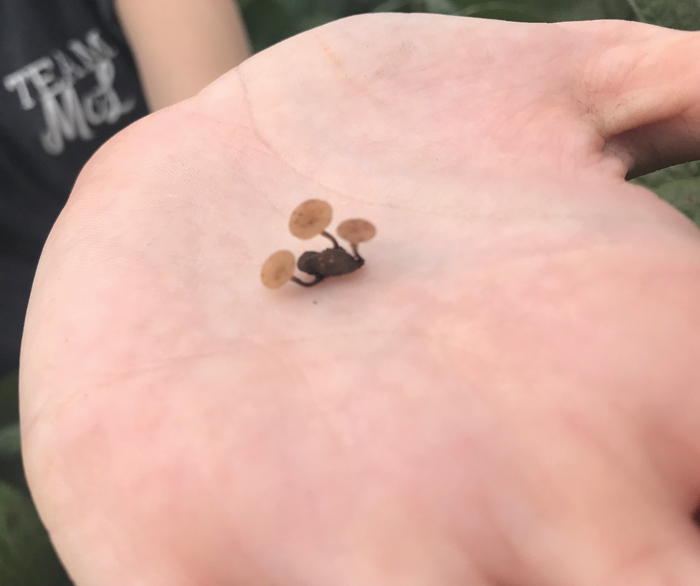
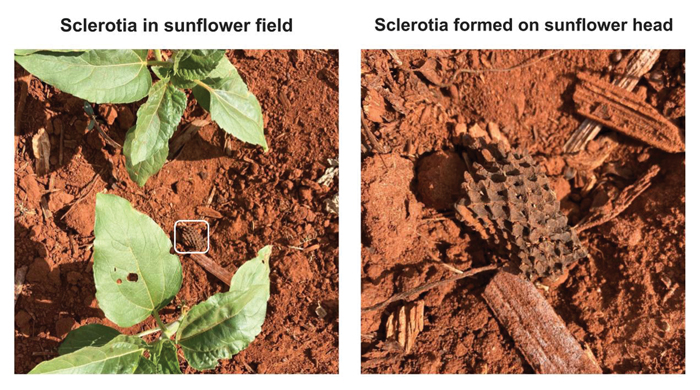
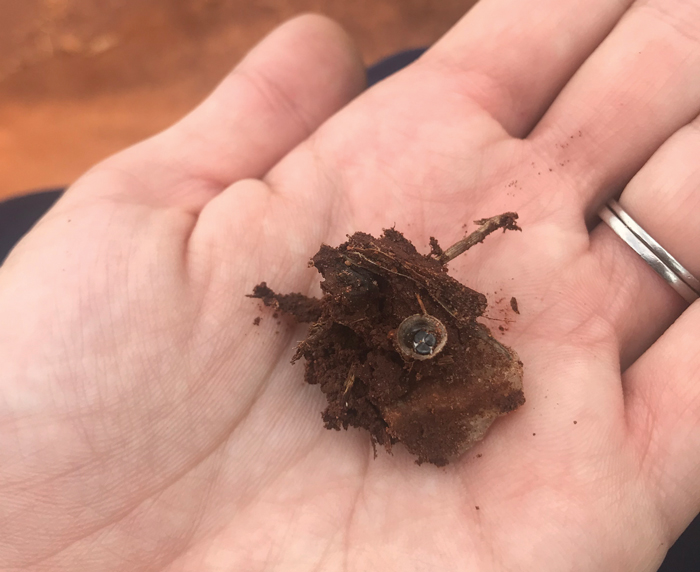
Remember the disease triangle
The development of diseases associated with S. sclerotiorum is highly dependent on a conducive environment: cool, wet conditions and denser canopies (planting density and row spacing) where air circulation is limited. This creates a favourable micro-climate for disease development. Soybeans and sunflower are especially susceptible to Sclerotinia during flowering. Therefore, if apothecia are present one to two weeks before flowering, it is likely that spores will be present during this stage of the plant’s life cycle.
In general terms, the parameters that affect the risk of disease incidence are shown in Figure 1.
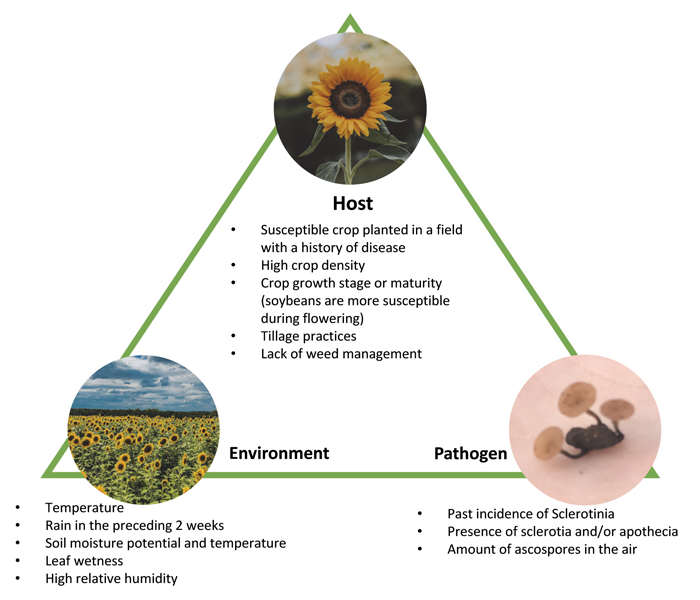
Spot symptoms early
Critical to managing Sclerotinia stem rot of soybean and head rot of sunflower, is the early detection of apothecia so as to intervene before symptoms are observed. Initial symptoms include water-soaked lesions (Photo 4) which develop into white cotton-like mycelium on sunflower heads (Photo 5) and soybean pods as well as in and on the stems (Photo 6) of both sunflower and soybean. Ultimately, as the disease progresses, the white mycelium develops into melanised hardened sclerotia (Photo 7), providing a manner
for the pathogen to survive between seasons and under non-conducive conditions.
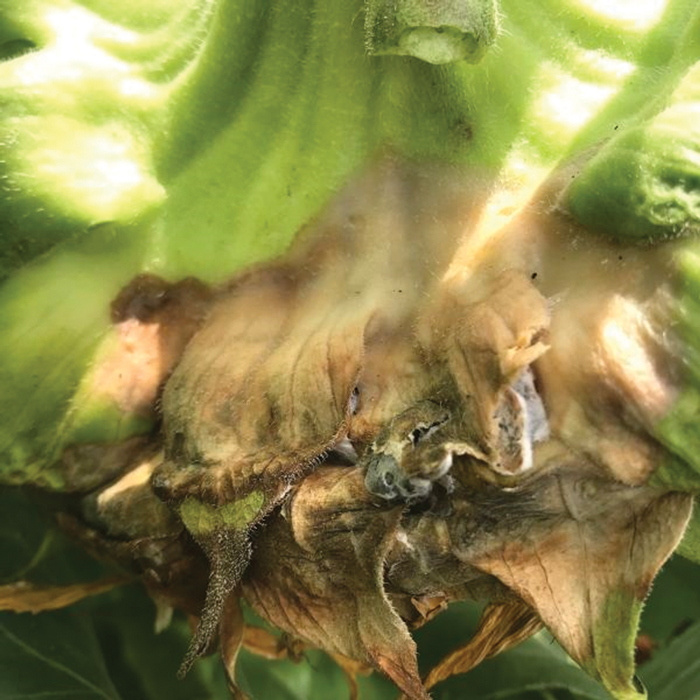
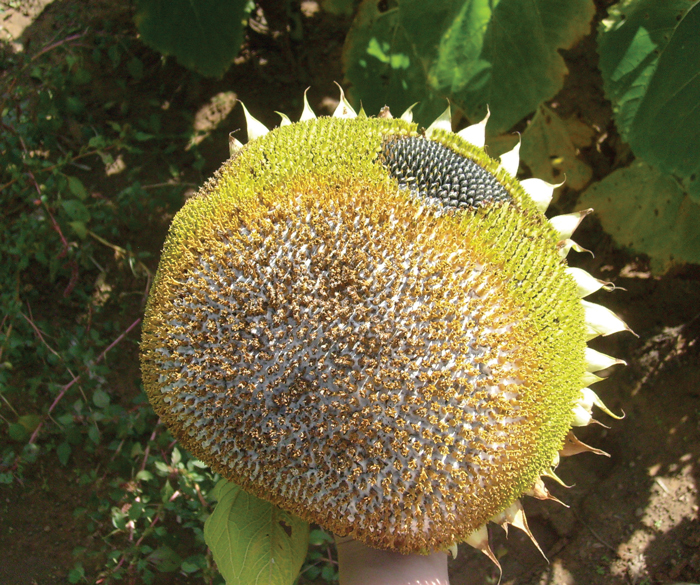
Photo: Dr Lisa Rothmann
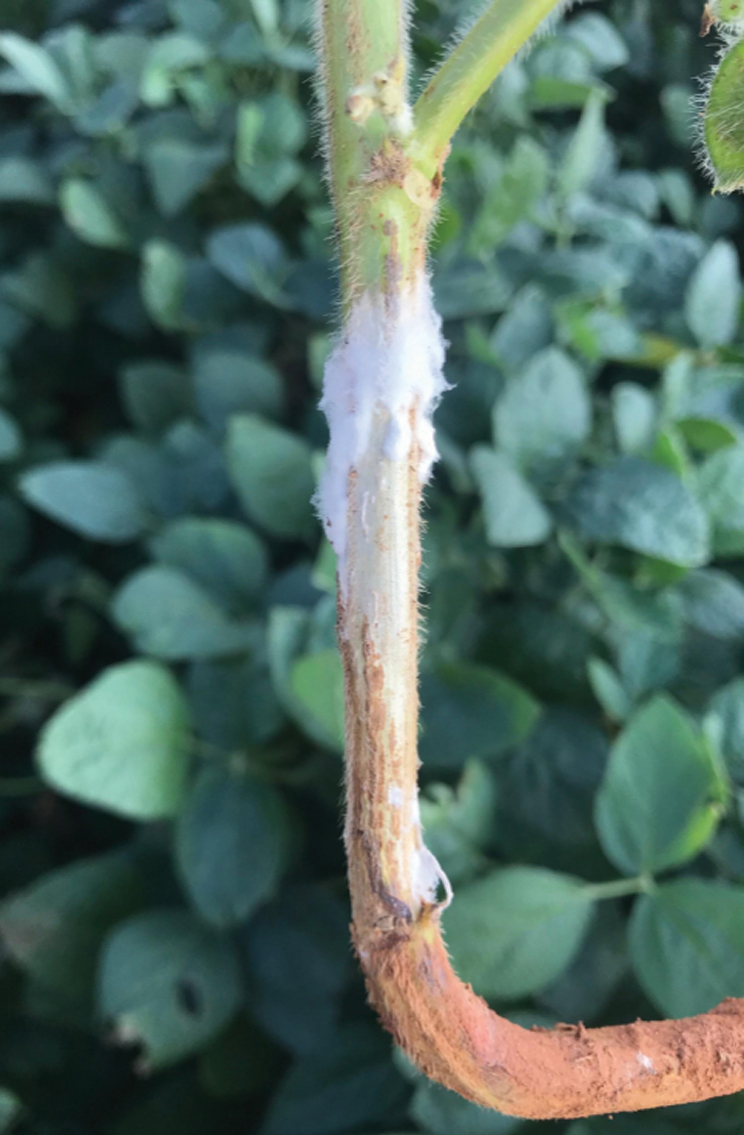
Photo: Dr Lisa Rothmann
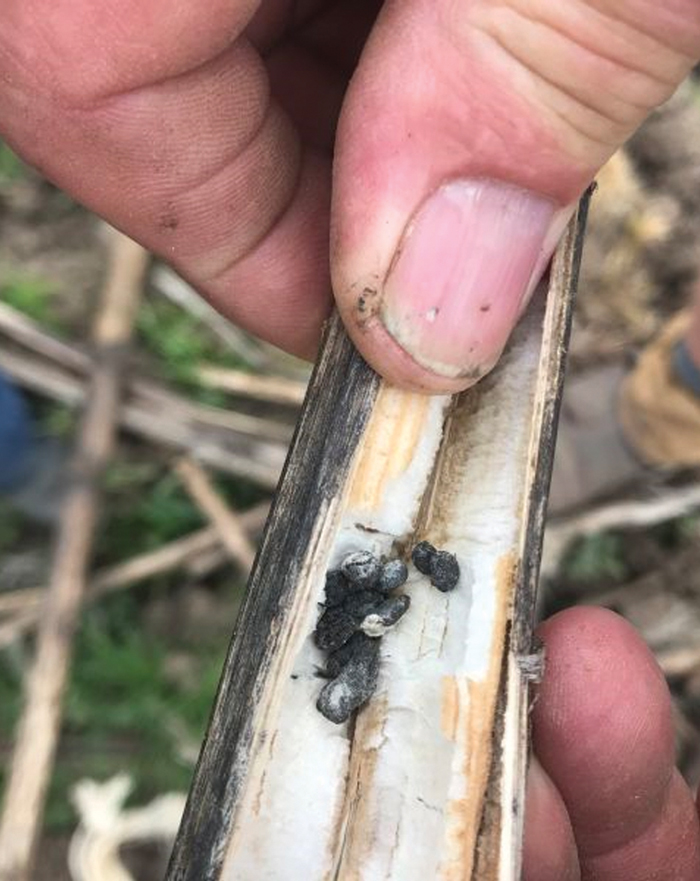
Take action
Once apothecia are observed, be aware that with favourable environmental conditions, disease development is likely. (For help identifying apothecia, send a WhatsApp to Dr Miekie Human on 067 016 9493.) Observing apothecia is often critical to the decision to implement disease management. Therefore, producers should take the time to familiarise themselves with chemical control options as well as the optimal times to spray.
There are a limited number of registered fungicides for oilseed crops, such as canola, soybean and sunflower, in South Africa. These include azoxystrobin, benomyl, cyprodinil, epoxiconazole, fludioxonil, procymidone and pyraclostrobin. Benomyl is currently registered as a seed treatment for sunflower, whereas procymidone is the only active ingredient registered for Sclerotinia stem rot control on soybeans. A registered label for soybean rust, with active ingredients pyraclostrobin plus epoxiconazole, suggests the fungicide may reduce Sclerotinia stem rot (AVCASA, 2019). The decision to spray or not to spray is dependent on weighing the risk present, which starts with being alert to the presence of apothecia.
For more information, please visit the website of the South African Sclerotinia Research Network (SASRN) at www.sclerotinia.co.za or contact Dr Lisa Rothmann at coetzeeLA@ufs.ac.za or 079 270 9691.










